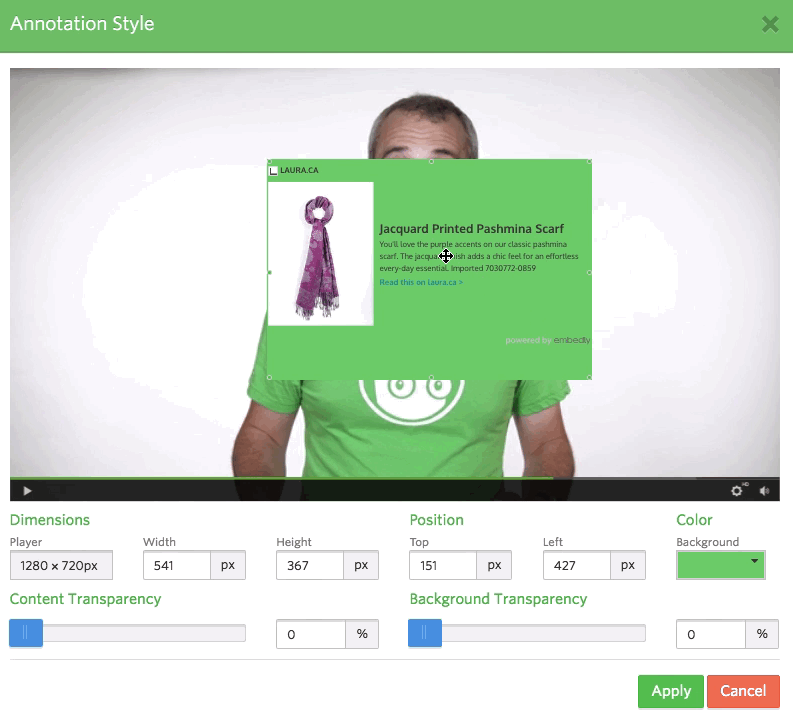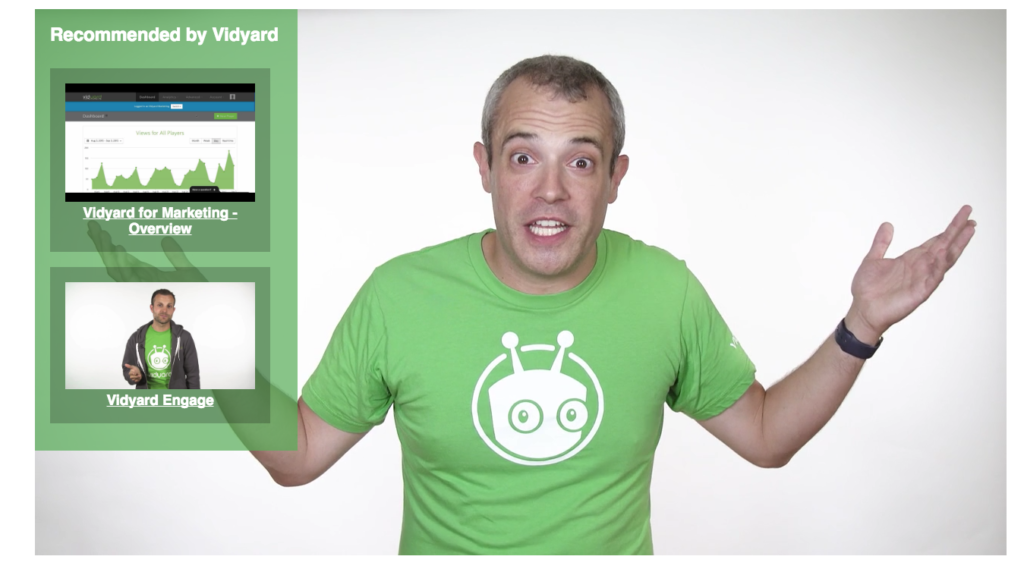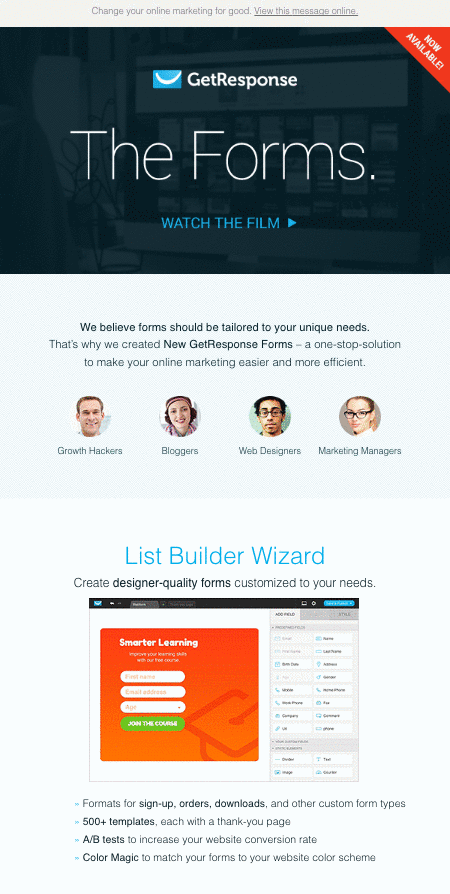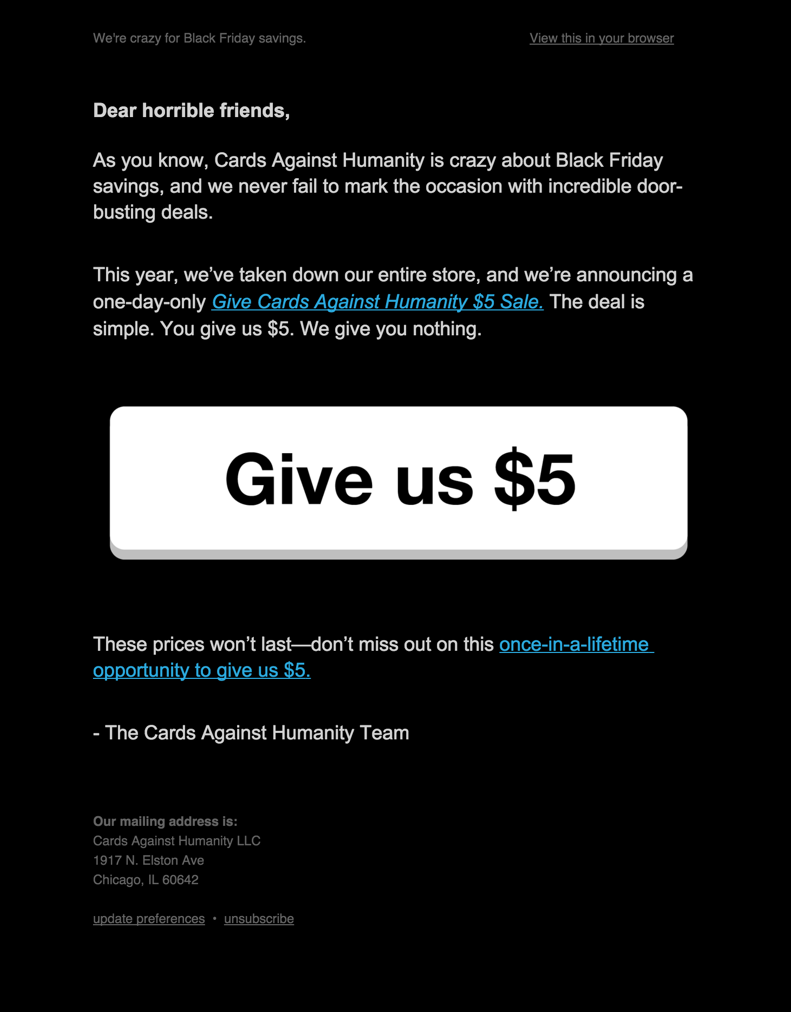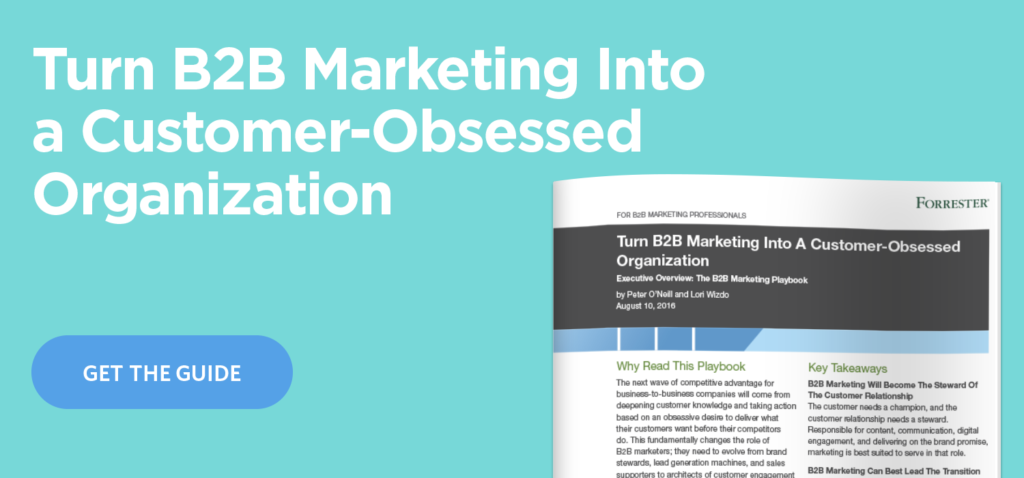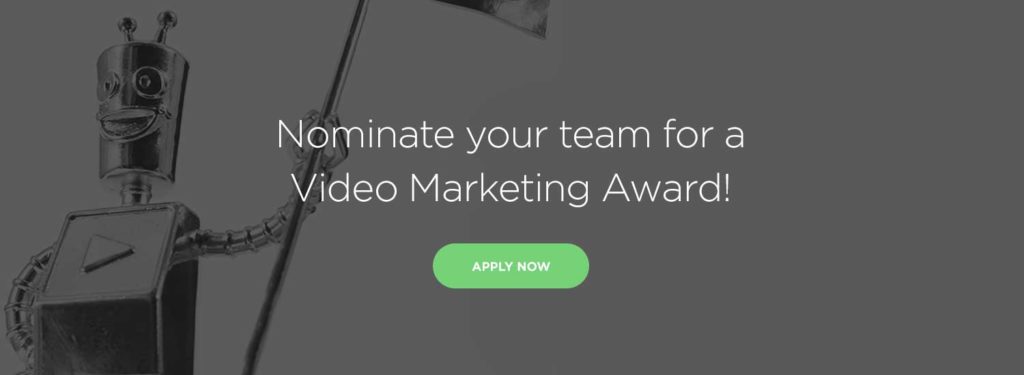What’s on your list of “Wants”? Other than a unicorn or a nice ice cream sandwich. Is video on that list?
Wait, that’s probably a silly question. EVERYONE wants video. So let me rephrase: If you’re part of an employee communications team, is video on your “Needs” list? If it’s not, check your forehead – that ice cream sandwich might have given you permanent brain freeze.
Did you know that even as far back as 2012, 93% of internal communication professionals believed that video was becoming essential to internal communications? And that sentiment is only growing stronger year after year: video is no longer a nice-to-have for internal communications teams. It’s a must-have.
Video solves an abundant number of challenges that internal communicators face every day. It’s why communicators who are in-the-know make sure to fold their hands and pray for video every night before getting in bed, or wish upon the first star they see, or use the wishbone during the holidays to try to make their video dreams come true. Sound over the top? Let me tell you all the ways video will make your communications more powerful:
It fixes engagement problems.
Brace yourself—this might scare you: 70% of US employees have admitted they aren’t engaged at work, according to one study. While you may not have known the exact number, and it may fluctuate, you’re probably not all that surprised. One of the biggest challenges communicators face is how to reach employees who are too busy, too bored, or too uninterested in what their company has to say.
That’s where video can help. Think of all the video you watch; we enjoy it so much that we watch 4 billion videos on YouTube per day, and we spend 6 billion hours watching video on YouTube per month. Nothing speaks to us the way video does; it’s personal, it’s relatable, it feels human in a way that text never can. It’s why people watch how-to videos on YouTube instead of reading a big manual. Simply, video is the next best thing to being there in person. There’s a lot of science that explains why, and if you’re interested, check out this blog post.
Our love of video means that we demand it in our workplace, too. A recent stat showed that 59% of executives would rather watch video than read text. You can bet that number is comparable for your whole employee base. So why stick with the traditional tools? Lengthy emails just aren’t cutting it anymore, and your important messages are likely just getting deleted. Even text-based Intranet pages may not be enough: In a survey from only a few years ago, only 13% of employees said they used their company’s intranet daily, while 31% said they never do. If you’re relying on email and Intranet, you need to strengthen your strategies with video. Give employees what they crave, and you’ll find that employee engagement strengthens.
Video can be offered on any channel or device, anywhere, for a unifying and engaging experience.
Have you stayed away from video because you’re afraid to put confidential information on YouTube? Don’t let security concerns scare you away from video. All you need is a video platform for your business. Instead of residing on YouTube, you can embed your videos right into your Intranet pages, or offer your videos on “sharing pages” that seamlessly fit into your Intranet or website for a clean, distraction-free experience.
You can even add a video experience into your emails, which has been shown to increase email open rates and engagement (especially if you include the word “Video” in the subject line of your email). You don’t have to worry about whether it will be too big to send or if it will appear properly for everyone. All you need to do is add a thumbnail image, or “splash screen” of your video (along with the play button to indicate it’s a video) into the body of your email. Then when your audience clicks on it, it can open up on an Intranet page of your choosing, or a clean and distraction-free “sharing page” like this one that we created for one of our event videos.
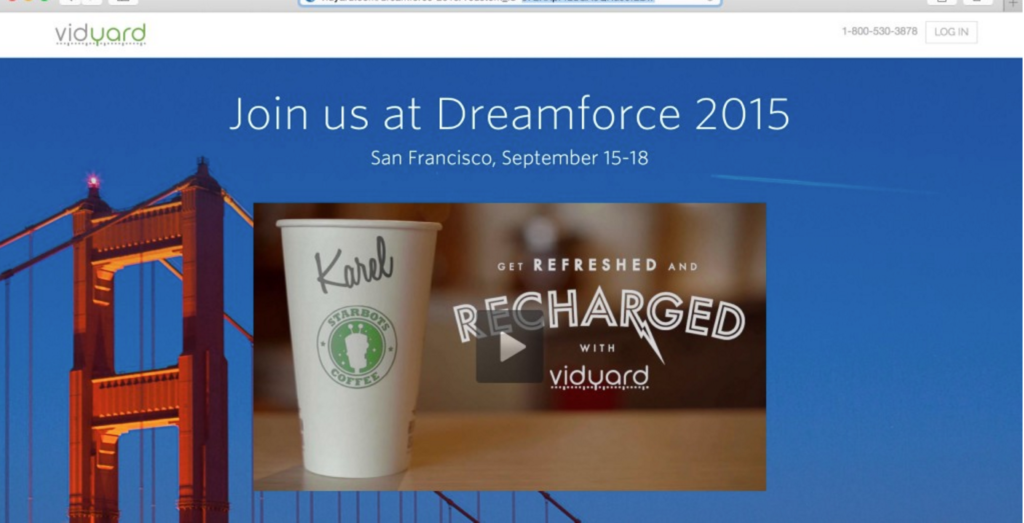
You can even create a Video Hub, which acts like a video library on your website or Intranet (which can be locked down for employees only). A Video Hub is can be organized into topics, creator, video styles, or anything else you like, and it’s searchable so if you or your employees are trying to find past content, it’s all there right when you need it. Probably sounds a lot more tempting than what you’re using now, right? Here’s an example of what a section of our own Video Hubs looks like, or explore the full hub for yourself.
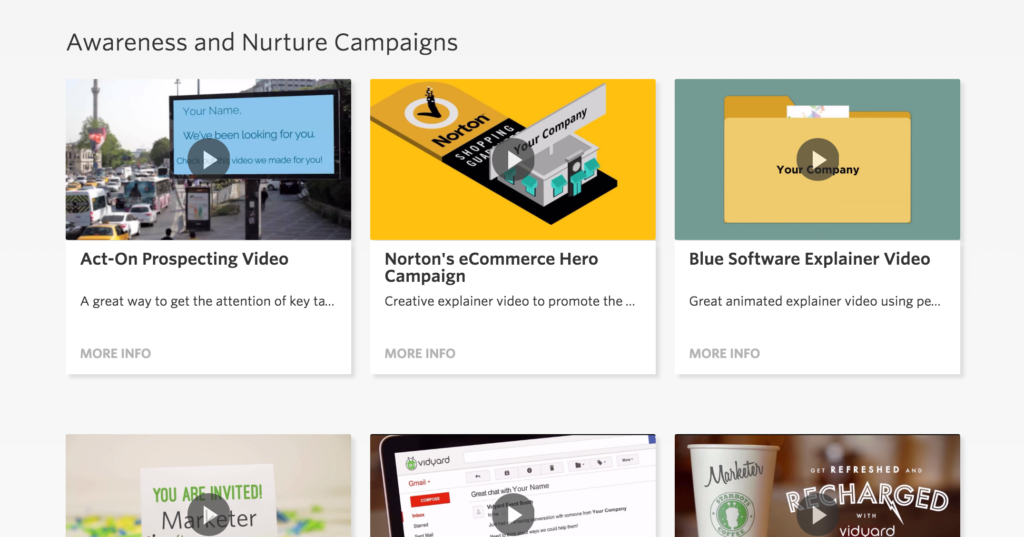
The bonus? Employees can access them on any device, and from any location. So if some employees are based in regions where access to YouTube is banned or limited, they can still get all the vital information they need.
Video gives you unmatched data that you can act on for better results.
What are you doing now to determine if your employees are really engaging with your messages? Are you checking whether your emails are being opened, or how much traffic you’re getting on certain Intranet pages? Those are all well and good, but they’re a starting point. Just because an employee opens your email, how do you know she read it? If someone lands on a certain Intranet page, did the page just sit on their screen while they did something else?
Video on the other hand, gives you what you need to know about your employees and your content. Get aggregate data on each video, like where your audience dropped off. Did they stop watching after 10 seconds? Or did they watch 80% of a 5-minute video? Were there any parts they skipped or rewatched? All this data tells you what kind of content is working and what isn’t, so you know what your employees are interested in, which messages to strengthen, and which ones don’t resonate. This “digital body language” of your viewers gives you a true indication of their engagement – perhaps even truer than asking them, since “body language” doesn’t lie.
You can also find out what individuals are watching, and even see a history of their viewing behavior. Why is this helpful? Well, imagine you created a video or series of videos that every employee needed to watch to the end in order to meet compliance needs. This data will tell you exactly what you need to know.
With true information on how audiences and individuals are responding, you’re better equipped to strengthen your content and employee engagement in the future.
You can get employees engaged in a two-way conversation.
Gone are the days when employees will accept getting messages, goals, and company values relayed to them in a one-way “communication”. Employees want to feel like they’re a part of something, that their work matters, and they are valued and heard. That’s how they become more engaged with a company, work harder, and feel more satisfied and connected.
Video can help you create exactly the experience your employees are searching for, because with video, you can offer a two-way conversation in ways that other mediums don’t allow. What do I mean? If you’re using a video platform, you can add calls-to-action onto your videos to get employees to take an action you want them to take, like visiting a page, watching another video, and more. Or you can include a form in a video to ask your employees their feedback and opinions. (If you like the sounds of that and want to see what else you could do, you might want to check this out.)
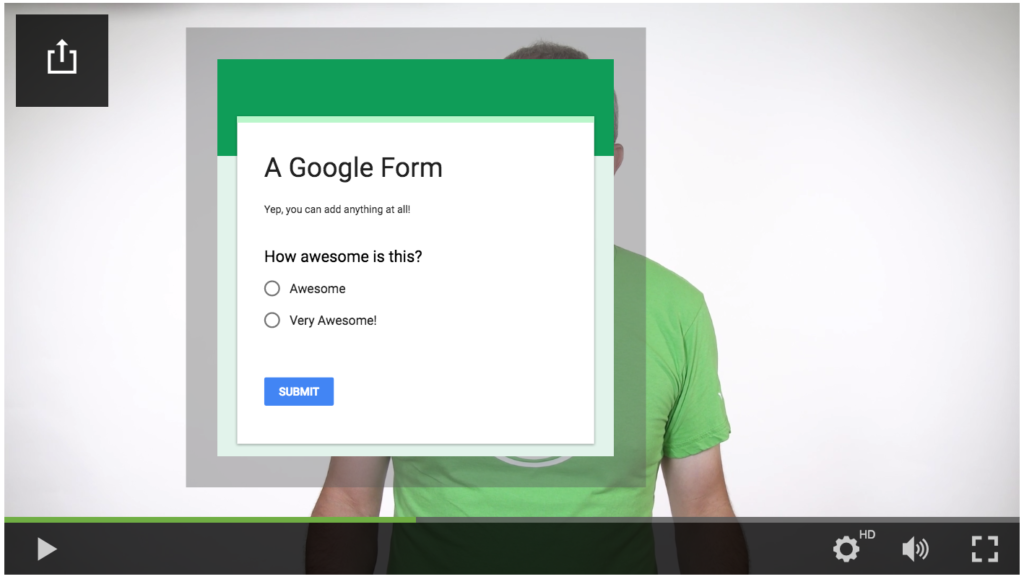
These kinds of two-way interactive elements in your videos can help you strengthen your relationships with employees so that your communications feel more like conversations and less like trickled-down mandates. Try it for yourself. You’ll see what it can do you for your company – you might even notice a 20-25% jump in productivity by employees who now feel more connected.
Video is more efficient—and helps your employees be more efficient.
Imagine if you could share vital company information more quickly than ever, and have it be remembered. Well here’s an interesting fact: 65% of people are visual learners. And another one:
one minute of video is the equivalent of 1.8 million words. Which means your employees can absorb a lot more vital information in one minute through video than they could in any other medium. And they’ll not only enjoy it, they’ll remember it, too.
This is just the beginning of how video can help your company become more efficient. Think about Town Hall meetings and company updates with the executive team. Instead of getting everyone together in another location, setting everything up, and trying to get through all the technical delays or other hiccups of these kinds of events, you could offer key messages in video form, whether it’s live or on-demand where employees could digest them at their leisure.
Or, think of complex material you need to educate your employees on. Communicators know the golden rule of “show, don’t tell”, and video is perfect for that. Suddenly employees can see for themselves how something is supposed to work, instead of having to read and puzzle through tons of text. For example, show them where the fire exits are in case of an emergency, instead of having to create and email maps that some struggle to follow or remember. Show them through a screen-share video how to complete a benefits enrollment form, and suddenly the benefits team, and the employees filling out the forms, will breathe a sigh of relief. And these are just a taste of the ways video can help.
Video can help you create brand awareness and loyalty.
In a previous blog post, I talked about how images that elicit emotional responses cause our brains to release a chemical called oxytocin. This chemical helps us form empathy, leading to emotional connections, and even helps to build trust in a product or brand. What does this mean in terms of video? Well, it’s full of images that elicit emotional responses! When we see people on camera, we imagine that they are conversing with us. We see their body language and non-verbal cues, and we relate to them in ways that words on a page can’t re-create. We start to feel emotionally connected in their story…which helps build awareness, trust, and other positive emotions.
What does all that lead to? When employees feel positive emotions toward their company, they feel more loyal. They’re willing to work harder, think more positively, and connect in ways they wouldn’t otherwise. These engaged, happy employees create better, more innovative work.
Beyond emotional connection, when you offer your videos in a branded sharing page, Video Hub, or in a video player that is branded with your company’s logo and colours, you’re highlighting again and again who these communications are from, and creating a sense of unity for your employees – you’re all working toward the same goals, sharing the same values, and upholding a strong culture together. That’s a pretty powerful message.
Video can help prove the ROI of communications and comms teams.
Did you know that, according to IABC, 60% of internal communicators are still not measuring internal communication? It’s probably not a big surprise – the effect of communications has always been hard to nail down and measure. There are no sales numbers, no quantities to hit, no closed deals that you can definitively say occurred because of employee communications.
But with video, you have some effective tools to helping you prove the return on investment of your work and your team. With the data that is provided by a video platform, you have clarity on how much employees are engaged, and how that engagement strengthens over time. You can illustrate that you are creating better and better content that resounds with employees, helping your team and other employees achieve greater productivity and efficiency, and strengthening employee loyalty with your brand. Video offers you the opportunity to start qualifying and quantifying things that once seemed impossible to do so, so you can not only prove your worth, but feel your worth.
All of this—and it’s cheaper than you might think.
You don’t need to get tons of fancy cameras and lights and equipment and green screens and a production teams…your videos can be as simple and inexpensive (or as fancy!) as you want or need. You could get one great camera and clean out a meeting room to create your video shoots, or you can even use your own phone! Our own CEO sent out a company-wide video that he shot on his own phone as he was walking down the street, and sent it through email. When we clicked on it, it opened in a sharing page, and we were brought right into the experience. We felt like we were part of of the action, matching stride-for-stride with our CEO, hearing his thoughts and feeling his excitement. While I can’t show you the video (being an internal message, it’s confidential, after all!), it was a pretty powerful experience (much more so than a boring old text-based email would be!)

So go ahead! Don’t just wish for video—ask for it! Your prayers may just be answered, especially considering at least 87% of executives believe video has a great impact on an organization!
Do you use video now at your organization? How has it helped you connect with your employees and strengthen your results?
The post Why Video Is The Answer To Employee Communications Teams’ Prayers appeared first on Vidyard.
source
http://www.vidyard.com/blog/why-video-is-the-answer-to-employee-communications-teams-prayers/






